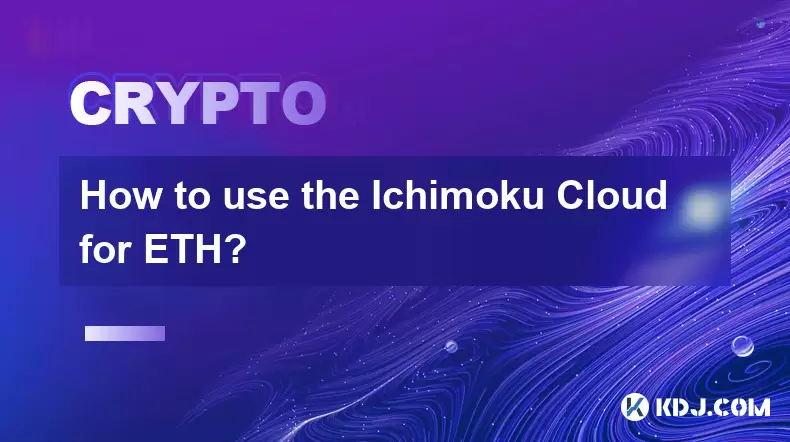-
 Bitcoin
Bitcoin $117900
-0.06% -
 Ethereum
Ethereum $3598
1.67% -
 XRP
XRP $3.433
0.63% -
 Tether USDt
Tether USDt $1.000
-0.02% -
 BNB
BNB $733.2
0.65% -
 Solana
Solana $176.9
-0.25% -
 USDC
USDC $0.9999
0.00% -
 Dogecoin
Dogecoin $0.2417
2.67% -
 TRON
TRON $0.3178
-2.25% -
 Cardano
Cardano $0.8310
2.11% -
 Hyperliquid
Hyperliquid $44.43
0.23% -
 Stellar
Stellar $0.4628
1.17% -
 Sui
Sui $3.852
2.09% -
 Chainlink
Chainlink $18.48
4.01% -
 Hedera
Hedera $0.2684
3.59% -
 Avalanche
Avalanche $24.57
4.87% -
 Bitcoin Cash
Bitcoin Cash $513.5
-0.02% -
 Shiba Inu
Shiba Inu $0.00001492
1.99% -
 Litecoin
Litecoin $113.2
11.61% -
 UNUS SED LEO
UNUS SED LEO $8.980
0.12% -
 Toncoin
Toncoin $3.211
0.51% -
 Polkadot
Polkadot $4.406
4.64% -
 Uniswap
Uniswap $10.16
0.26% -
 Monero
Monero $323.1
1.04% -
 Ethena USDe
Ethena USDe $1.001
-0.02% -
 Bitget Token
Bitget Token $4.936
1.21% -
 Pepe
Pepe $0.00001346
3.98% -
 Dai
Dai $1.000
-0.01% -
 Aave
Aave $318.9
-1.42% -
 Cronos
Cronos $0.1211
2.74%
What is RSI indicator for Ethereum?
The RSI indicator helps Ethereum traders identify overbought (above 70) or oversold (below 30) conditions, signaling potential price reversals or trend strength.
Jul 19, 2025 at 03:07 pm

Understanding the RSI Indicator
The Relative Strength Index (RSI) is a momentum oscillator used in technical analysis to measure the speed and change of price movements. For Ethereum (ETH), the RSI indicator is a widely adopted tool among traders and investors to evaluate whether the asset is overbought or oversold. Typically, the RSI operates on a scale from 0 to 100. When the RSI crosses above 70, it suggests that Ethereum may be overbought, potentially signaling a price reversal or pullback. Conversely, when the RSI drops below 30, it indicates that Ethereum might be oversold, possibly presenting a buying opportunity.
How to Calculate RSI for Ethereum
To understand how RSI applies to Ethereum, it’s important to know how it is calculated. The RSI formula is based on average gains and losses over a specified period, typically 14 days. Here’s a breakdown of the calculation steps:
- Calculate average gain: Take the sum of all gains over the 14-day period and divide by 14.
- Calculate average loss: Take the sum of all losses over the 14-day period and divide by 14.
- Compute relative strength (RS): Divide the average gain by the average loss.
- Calculate RSI: Use the formula RSI = 100 – (100 / (1 + RS)).
For example, if Ethereum had more up days than down days over a 14-day period, the RSI will reflect a higher value, indicating potential overbought conditions.
Interpreting RSI Signals for Ethereum Trading
Traders use RSI to identify potential trend reversals, price corrections, and momentum shifts in Ethereum’s price. When the RSI crosses above 70, it often suggests that the upward momentum is weakening, and a downward correction could follow. On the other hand, when the RSI falls below 30, it may indicate that selling pressure is waning, and a bullish rebound could occur.
However, relying solely on RSI can be misleading, especially during strong trending markets. For instance, during a powerful bullish phase, Ethereum's RSI might remain above 70 for an extended period without a significant pullback. Therefore, it's crucial to combine RSI with other technical indicators like moving averages, volume analysis, or support and resistance levels for more accurate signals.
Using RSI Divergence in Ethereum Analysis
One advanced application of RSI is divergence analysis, which occurs when the price of Ethereum moves in the opposite direction of the RSI. This can signal a potential reversal in the current trend. There are two main types of divergence:
- Bullish divergence: Ethereum makes a lower low in price, but the RSI forms a higher low, suggesting that selling pressure is decreasing and a potential uptrend may begin.
- Bearish divergence: Ethereum records a higher high in price, but the RSI forms a lower high, indicating that buying momentum is weakening and a downtrend may follow.
Recognizing these patterns can help traders anticipate trend reversals and adjust their strategies accordingly.
Setting Up RSI on Ethereum Trading Platforms
Most cryptocurrency trading platforms and charting tools, such as TradingView, Binance, or CoinMarketCap, allow users to apply the RSI indicator directly on Ethereum price charts. Here’s how to set it up on a typical platform:
- Open the charting interface for Ethereum.
- Locate the indicators or studies section.
- Search for RSI and click to add it to the chart.
- Adjust the RSI settings (default is 14 periods, but some traders use shorter or longer periods based on strategy).
- Customize visual settings such as overbought/oversold lines and color schemes for better clarity.
Once added, the RSI will appear in a separate window below the price chart, allowing for real-time monitoring of momentum shifts.
Common RSI Strategies for Ethereum Traders
Traders employ various strategies when using RSI for Ethereum:
- Overbought/Oversold Strategy: Wait for RSI to reach above 70 or below 30 before considering trades. For example, when RSI dips below 30 and then crosses back above it, a long position might be initiated.
- RSI Trendline Breaks: Draw trendlines on the RSI line itself. A break above or below these trendlines can serve as a trade signal.
- RSI and Moving Average Crossovers: Combine RSI with moving averages like the 50-day or 200-day EMA to filter out false signals and confirm trend strength.
Each strategy has its pros and cons, and it’s essential to backtest any RSI-based strategy before applying it to live trading.
Frequently Asked Questions
What is the best RSI setting for Ethereum trading?
While the default RSI setting is 14 periods, some traders adjust it based on their trading style. Short-term traders might use 7 or 10 periods for more sensitivity, while long-term investors may stick with 21 or 30 periods for smoother readings.
Can RSI be used for Ethereum futures or options trading?
Yes, RSI is equally applicable to Ethereum futures and options. Traders can apply the same principles of overbought and oversold levels, divergence, and trend confirmation to derivative instruments.
Why does RSI sometimes give false signals in Ethereum markets?
Cryptocurrency markets, including Ethereum, are highly volatile and influenced by external factors like regulatory news, market sentiment, and macroeconomic events. These can cause RSI to generate false signals if not used alongside other confirmation tools.
Is RSI effective for intraday Ethereum trading?
Yes, RSI is commonly used in intraday trading for Ethereum. Traders often combine it with candlestick patterns and volume indicators to improve the accuracy of short-term trade setups.
Disclaimer:info@kdj.com
The information provided is not trading advice. kdj.com does not assume any responsibility for any investments made based on the information provided in this article. Cryptocurrencies are highly volatile and it is highly recommended that you invest with caution after thorough research!
If you believe that the content used on this website infringes your copyright, please contact us immediately (info@kdj.com) and we will delete it promptly.
- XRP Mining, the GENIUS Act, and Coin Holders: A New Era?
- 2025-07-20 06:30:12
- Arctic Pablo Coin: Navigating the Icebound Estates Presale and Token Burn Strategy
- 2025-07-20 06:30:12
- Arctic Pablo Coin's Myth-Themed Presale: Icebound Estates and Beyond!
- 2025-07-20 06:50:12
- Snorter Token's Presale Success: Riding the GENIUS Act Wave in the Crypto World
- 2025-07-20 06:50:12
- PENGU Token's Breakout Momentum: Riding the Wave in a Bearish Market
- 2025-07-20 07:10:12
- Crypto's 100x Hunt in 2025: Beyond the Hype
- 2025-07-20 07:10:12
Related knowledge

What is Polkadot (DOT)?
Jul 19,2025 at 06:35pm
Understanding the Basics of Polkadot (DOT)Polkadot (DOT) is a multi-chain network protocol designed to enable different blockchains to transfer messag...

How to add indicators to Ethereum chart on TradingView?
Jul 19,2025 at 07:15am
What Is an Ethereum Chart on TradingView?The Ethereum chart on TradingView is a visual representation of the price movement of Ethereum (ETH) over a s...

How to use the Ichimoku Cloud for ETH?
Jul 18,2025 at 09:56pm
Understanding the Ichimoku Cloud and Its ComponentsThe Ichimoku Cloud, also known as Ichimoku Kinko Hyo, is a versatile technical analysis tool that p...

SMA vs EMA for Ethereum which is better?
Jul 19,2025 at 12:36am
Understanding the Basics of SMA and EMAIn the world of cryptocurrency trading, especially when dealing with Ethereum, technical indicators play a cruc...

Best moving average for Ethereum day trading
Jul 19,2025 at 01:42am
Understanding the Role of Moving Averages in Ethereum Day TradingIn the realm of Ethereum day trading, moving averages are indispensable tools for ide...

What is RSI indicator for Ethereum?
Jul 19,2025 at 03:07pm
Understanding the RSI IndicatorThe Relative Strength Index (RSI) is a momentum oscillator used in technical analysis to measure the speed and change o...

What is Polkadot (DOT)?
Jul 19,2025 at 06:35pm
Understanding the Basics of Polkadot (DOT)Polkadot (DOT) is a multi-chain network protocol designed to enable different blockchains to transfer messag...

How to add indicators to Ethereum chart on TradingView?
Jul 19,2025 at 07:15am
What Is an Ethereum Chart on TradingView?The Ethereum chart on TradingView is a visual representation of the price movement of Ethereum (ETH) over a s...

How to use the Ichimoku Cloud for ETH?
Jul 18,2025 at 09:56pm
Understanding the Ichimoku Cloud and Its ComponentsThe Ichimoku Cloud, also known as Ichimoku Kinko Hyo, is a versatile technical analysis tool that p...

SMA vs EMA for Ethereum which is better?
Jul 19,2025 at 12:36am
Understanding the Basics of SMA and EMAIn the world of cryptocurrency trading, especially when dealing with Ethereum, technical indicators play a cruc...

Best moving average for Ethereum day trading
Jul 19,2025 at 01:42am
Understanding the Role of Moving Averages in Ethereum Day TradingIn the realm of Ethereum day trading, moving averages are indispensable tools for ide...

What is RSI indicator for Ethereum?
Jul 19,2025 at 03:07pm
Understanding the RSI IndicatorThe Relative Strength Index (RSI) is a momentum oscillator used in technical analysis to measure the speed and change o...
See all articles

























































































